An exclusive feature supported by the LITHUANIAN COUNCIL FOR CULTURE.
Landing page: Internationally acclaimed Lithuanian Artists Svajonė Stanikienė and Paulius Stanikas aka STANIKAS, photographed by Laima Kavaliauskaitė.
Introduction by Christian Caujolle.
'With their large-format photographs, huge drawings in leaden shades of grey, terracotta sculptures that look like bronze or marble, and videos, the Stanikas are quite disconcerting. Unlike other contemporary artists who try their hand at all the media as a matter of course, they use each medium for its own specific qualities.
And the apparent eclecticism of their work, the internal logic of their objects in the different media they take up, results, in an immensely unsettling way, in the expression of a mental universe in which sculpture, drawing and photography all contribute their own particular features to assert a unique vision.
When we place side by side, as we have attempted to do for the presentation at Venice, works that have been produced from diverse materials, they might be seen as a collage or a collection; and, what comes as a surprise, with these objects obeying the aesthetic born out of the very logic of the materials from which they are made, they create an aesthetically diverse world with an intense consistency of vision.
And what is this vision? It is difficult to say, since it has a clear aspiration to the universal, to the human condition, to the tension between appearance and disappearance, between the sublime and the accidental, between beauty, which is constantly being challenged, and decrepitude, be it physical, leading to the decomposition of the body, or rhetorical, in a playful act of smirking and irksome provocation.
Few artists today declare with such force the essentially visual side of their vision. Few succeed in resisting the emptiness of words, and at the end of the day are incapable of stating, describing or explaining a vision which is based on the tension between an unusually pliant fluency and a robust protection of the mystery which infuses them.
If you point out to this charming couple, who so clearly work in unison with each other, that, basically, their work is tinged with violence, they will reply that this is “after all what life is like”.
When you ask them about their technical skills, which allow them to draw sexual images that are rooted in treatises on anatomy, in order to present us with huge drawings that evoke Italian high classicism, or which allow them to create sculptures which convey the perfection of casts and patinas from the 19th century, they explain it by their training. Then they smile, absolutely aware of the diversion they are causing, using their work to speak, with a rare precision, about today and the issues in contemporary art. Against cliché, against pornography, against platitudes, against commercialism, they investigate the nature of feeling. They use violence precisely to divert it from its sensational qualities, and to question its very foundations.
There are few works today that promote such a freedom of approach: freedom from fashion, from trendy aesthetics, from consumerism, from the “corrective influence” of demand. There are few works today which do not seem to be nothing more than singularities passing as aberrations.
The main reason why I like this work lies in the fact that it owes nothing to others, it develops out of an internal necessity, it makes no concessions, and it has the basic aim of inquiring into, often rather sadly, the human condition. Also because it rejects superficiality in order to show itself for what it is: a radical questioning of human nature today, expressed with an incredibly strong sense of proportion, scale, enigma and mystery.'
Florian DAVID: When we met Antanas Sutkus three years ago, the first thing that he told us was: “I find the world ugly”.
We wanted to let you know that. And then ask you what you thought. How do, you, find the world?
Paulius STANIKAS: I think the same. The longer you live, the more you realize that.
So I would I agree with Sutkus. We have done many exhibitions together. While Antanas Sutkus is older than us he actually really likes what we are doing.
Svajonė STANIKAS: We get along with him.
P. STANIKAS: He told us once that he really appreciated our creations. Even though our work is quite different, our views of the world are similar.
DAVID: Was there a specific time when you started thinking ‘the world is ugly’? [Smile]
'I AM A PESSIMIST. (...) I HAVE HOLD THESE VIEWS AS A CHILD, FOR AS LONG AS I CAN REMEMBER'.
P. STANIKAS: I don’t know. I think Svajonė is a bit more optimistic than I am. I am a pessimist and this outlook on life is not something that grew bigger as I grew older. I have hold these views on the world since I was a child, for as long as I can remember.
S. STANIKAS: This is not translating into an “attitude”, it is merely a “realization” that the world is ugly. There is a difference. Knowledge and realization are different things. We realize.
P. STANIKAS: But maybe it is not really that ugly, is it..?
S. STANIKAS: Maybe it just appears to be like this. Like in church it is said: “It is not bad that it is ugly”.
'OF COURSE IT IS NOT FOR US TO DECIDE WHETHER [THE WORLD] IS GOOD OR BAD
IT IS GIVEN BY GOD, IT IS THE WAY IT HAS TO BE.'
P. STANIKAS: Of course it is not for us to decide whether it is good or bad, it is given by God, it is the way it has to be. I remember that we discussed this once, that if there were no bad there would not be good either. You need a reference point. Maybe we are not very great philosophers, but that the world is not good is something I have been knowing since childhood, even though I have had a nice childhood. I don’t know. How do you find it, Svajonė, you told me once that it is a bit better for you?
S. STANIKAS: Yes, I am an optimist. I am looking at evil with optimism.
P. STANIKAS: It probably has to be like this, we don’t know the good without the bad, it is not for us to decide what is good. But how can it not be ugly if we don’t know what will happen once we die?
S. STANIKAS: In general, I’d say, the world itself is ugly, people’s relationships. It is not ugly because you will die. It is mankind that makes it ugly. Brutality (animality) really wins. We are talking about racism, wars, all of this these things are pointless.
DAVID: Don’t you think that we so called ‘humans’ are behaving much worse than what we call 'animals' as if we were separate from them?
S. STANIKAS: Because we are stronger.
P. STANIKAS: We are probably not worse, but our brains should make us better. Knowing that we are able to act differently. Often humans are acting merely just like animals.
DAVID: We have a choice though.
P. STANIKAS: We have our mind, but we are not using it as much as we should use it and act well. And then we are acting like animals. Of course, sometimes the circumstances push us to act like animals. Sometime circumstances push a good person to do bad things, to act like an animal.
S. STANIKAS: And in general humans can be both – good and bad. There is no absolute goodness nor absolute evil. But now as we are saying that the world is bad, I think that maybe it is also because of politics that our world is messy. We always tend to think that there is always ‘progress’ only, but no, progress can stop and we can regress. Maybe because we are artists we are more sensitive to the world around, but really the atmosphere isn’t nice. The future doesn't look very promising.
P. STANIKAS: In fact our art is a lot about the relationship between good and evil. And often people ask us what our art is about: Is it about global warming, about men and women's relationships, about politics, or something else? There is a narrative in our art. We don’t get too much involved in specific themes, but we create mostly about good and evil. The world went through a first world war, and soon after there was a second world war. After the first world war people said that there would be no wars no more, and then the second world war happened. I remember this caricature, a drawing depicting a couple of Neandertals walking together holding a conversation: “I bet this was the last battle…” I remember this drawing that I saw when I was a child and it stayed with me. And since childhood I know that we never thought that anything like the second world war could happen again. But today, even after this terrible Soviet Union has collaped, today we have Trump, Johnson, Brexit, Le Pen. Today we see that it can all happen again. Maybe it won’t, and yet there is this feeling.
S. STANIKAS: Even in newspapers, in the media, on television, we never used to see that many guns, and now there is such a huge amount of them.
DAVID: Coming back to Sutkus and his statement 'the world is not perfect because man is not perfect'. Do you think that art has a role to play in our society?
'(...) WE REALIZE THAT WITHOUT ART THERE WOULD BE ABSOLUTELY NOTHING.'
S. STANIKAS: Yes. Art could be used as education. We ask ourselves, what are we doing with art? And then we realize that without art there would be absolutely nothing. Even if you look at it very primitively, very domestically. There wouldn’t be anything. No cars, no plates, no cups. We often talk with our friends who are businessmen, about the fact that governments should support the arts. Friends, you like nice cars, nice interiors, nice clothing, even philosophical art turns into something very practical. The origins of these practical things are still anchored in philosophy. There wouldn’t be any nice things if there was not an artist somewhere making poetry.
Another role that art plays is supporting tourism. Where there is art there is tourism. Why are so many people going to Paris?
P. STANIKAS: Humanity needs art and the reason why we are creating it is probably because, as Sutkus said, ‘the world is not perfect’. And certain people are such creatures that are just unable not to create. I don’t know...Why are we creating?
S. STANIKAS: This is propably what we do best.
P. STANIKAS: Well yes, but we started creating before we even knew that this is what we would be doing best.
S. STANIKAS: Everything from music to literature does impact society, you simply cannot ignore that. If an art piece is strong, it carries a message, it is saying something.
P. STANIKAS: We probably should say something about that first impulse, on why humans are acting one way or another. It could look as if all human activities should only be used towards making life practical, or making money. The goal is to make money in order to survive. Whereas Art is an activity where you don’t know whether you will be making any money. When you are in business, if there are no results you just stop that business. But the artist has got to be creating either way, no matter what. In the end I think that art is a philosophy. It is an attitude. Why do we need philosophy? The philosopher is a kind of creature that is constantly thinking: “What is that? Why is that? How is that?” I think that the artist is thinking similarly: “What is that?’, and ‘What is this that is surrounding me?”
S. STANIKAS: You are always trying to figure things out.
P. STANIKAS: The artist's motivation for creativity are its empowering nature, and curiosity, but not making money, for sure.
Lina LAPINSKIENE (DAUGIRDAITE): I think that too, that art is a way to express a philosophy.
S. STANIKAS: Yes, surely, we also came to that conclusion.
'(...) WE MAKE FOR POOR PHILOSOPHERS [SMILE], BUT IN SOME WAYS YES, WE ARE PHILOSOPHERS'.
WE ARE ALWAYS QUESTIONING'.
P. STANIKAS: Well, we make for poor philosphers [smile], but in some ways yes, we are philosophers. We are always questioning.
S. STANIKAS: Why? Why? Why?
L. LAPINSKIENĖ (Daugirdaitė): You are saying: “let’s not separate functional art and applied arts from fine arts”. Why do you say so? For me it is clear that you would like to have a nice looking car, but why would you need a painting? This could become less obvious.
P. STANIKAS: Without painting, you wouldn’t have a plate. My friends entrepreneurs and businessmen would ask too ‘Why would you need a painting?’ But they still want it.
S. STANIKAS: At all times people have been wanting [desiring] paintings.
P. STANIKAS: Without a poem you would have neither a painting nor a plate. A nice plate comes out from that same poetry, from that same philosophy. We actually know nothing about ourselves. We know nothing. Neither how we got here, nor why we are then gone, we don’t know why there are creators and artists. Sutkus answered: “Because the world is not perfect. This is why man is creating.” But the world might very well be perfect. God created it perfect. Up until the end of Nineteenth Century, a man didn’t know how pregnancy really happened. Because there were no microscopes, they could not see spermatozoids. At the end of the day we still really do not know what a spermatozoid is and we don’t know what we are.
S. STANIKAS: Look at graveyards. Every person comes to his or her grave and the creation process starts. At home people are creating too. Every single person has at least a grain of creativity.
DAVID: So it leads us to this this question, what is art: How would you define art?
S. STANIKAS: Well it is a creative process.
P. STANIKAS: Art is philosophy. It is a creature’s views of the world. Because that creature wants to express itself, he or she writes books, sculpts, draws. A man is composing his attitude in response to his surroundings. For a very long time everyone had been saying that Van Gogh was no good. He was a bit smarter and he knew what he was doing, and every one else just had a “smaller brain” [smile]. People needed some time to realize that Van Gogh was good, even though before they had been saying he was no good. The best critics of the time, the best museums said: “Go to hell, you are not interesting at all!” And today we are saying to him you are the best, because it needed a large group of people to realize at last that he was good. Some people did realize earlier than some others that Van Gogh was good. Even Rodin for instance knew that Van Gogh was good.
'RODIN WOULDN'T HAVE SAT WITH SOME DUMB GUY IN ONE STUDIO, HE MUST HAVE KNOWN THAT VAN GOGH WAS GOOD'
S. STANIKAS: Rodin wouldn’t have sat with some dumb guys in one studio, he must have known that Van Gogh was good.
P. STANIKAS: Well he wouldn’t have said that Van Gogh was good, because Rodin was doing well for himself, he didn’t want to lose his status. This too, you see, is the world of animals.
DAVID: It seems to me that you too are idealists. You have views on what that world should be like. And a willingness to change it because all things considered, you do not like it. Wanting to change things often stems from two apparently opposite impulses: compassion and, or, anger. Two powerful emotions that prompt you to take action. You can create out of love, and you can create because you are angry or because of both. I see both impulses at play within your works. I see compassion and I do see anger. Is that assumption correct?
S. STANIKAS: We are merely raising questions. In our work we ask questions more than we give answers. We are mostly raising critical questions. We look and react to political events. We look at what excites us and we raise questions. Our characters are, roughly put, neither good nor bad.
P. STANIKAS: When we create our starting point most often is not coming from lots of thinking.
S. STANIKAS: Yes, it is coming more from feelings.
P. STANIKAS: Yes, it comes from feelings and of course after that we work with our brains. We think. I don’t even know how all things are working inside my head! [Smile]
L. LAPINSKIENE: And do you think about the viewer, who will be seeing that work, and wonder how he or she could be touched?
S. STANIKAS: We think of it but really we focus more on thinking about how we should approach our work.
'MOSTLY WHAT WE CREATE IS NOT MEANT FOR OTHERS BUT FOR OURSELVES'
P. STANIKAS: Mostly, what we create is not meant for others, but for ourselves.
S. STANIKAS: In its essence, the creative process is a battle againt yourself. You decided upon a challenging task and will you overcome it or not is the question. And yes. You are doing it for yourself, but you don’t forget the viewer.
P. STANIKAS: I suppose that the viewer would react to the work the same way as I do.
S. STANIKAS: When you are composing, you are thinking if you do this, the viewer will understand that. So you are throwing various hints at the viewer. Visual arts is an artform that could be read too.
P. STANIKAS: At first the viewers will see this, then this and then that. At first the viewer will laugh, then get surprised, then get sad, then scared and laugh again. Practically you are composing his journey. And when we are creating something, we too are laughing and crying.
S. STANIKAS: Yeah, if the work is good.
P. STANIKAS: Yes. For instance, we could easily cry next to our paintings.
L. LAPINSKIENE: What do you mean?
S. STANIKAS: Well, Paulius is a bit more sensitive.
P. STANIKAS: Sometimes it could be sad. The painting could be really sad. The works that we show in galleries are works that touch us deeply.
S. STANIKAS: If they don’t touch us, we don’t show them.
P. STANIKAS: Only when the work creates these “Oh it’s funny” or “Oh it’s not funny” and then “Oh it’s scary” feelings, and then you really look at it and think, “but really, it’s funny”, then you look at it again and realize that in the end it probably is not. Only then does the work deliver that symphony of feelings. If the work doesn’t touch us in that way, it won’t touch others either. Some people get really sad and shocked after our exhibitions. They are ruminating for weeks. They come to us and say that they got deeply touched and that the exhibtion got them really thinking about one thing or another. We too, as we just said, can be that much affected by our own work.
S. STANIKAS: Another thing we have is that there are two of us, so we have a chance to look at things from aside.
P. STANIKAS: Our exhibitions are really expressive, some people say that they are very emotional and that they get too affected by them and don’t really like that. We get criticized for the fact the our work affects people too much. Then people say that our work reminds them of some Hollywood movies. We are often proceeding like this: You do the first layer, then you step back, then you do add another layer [of work] and step back again. We use some things to catch the viewer’ s attention, and then we get into more depth. We also use lots of clichés too.
S. STANIKAS: Oftentimes people are looking at some shit and they are amazed. [smile]
P. STANIKAS: Some organizers in group exhibitions are sometimes thinking: “Ah, maybe I will do without them!” [Smiles]. At the Centre Pompidou in Paris there was a huge exhibition with some gigantic paintings of ours, maybe the size of this wall. Huge. And they were really powerful, and people said that they were afraid to go to this area to see them. Sometimes we think it is good that works are strong like that, but sometime we are not even so sure anymore! [laughs].
S. STANIKAS: Once, some twenty years ago, a corporation had installed one of our paintings at their office. It was a simple abstact painting. And the company said that they could not hold any meetings next to it. They had it for a month, and then they took it down. An abstraction was affecting them too much.
P. STANIKAS: We could really make art that sells. But we cannot betray ourselves. In art it is very important to not make any compromise. Success maybe will come in some unexpected way.
DAVID: This is kind of very buddhist [smile]. Timing doesn’t depend on you. Time will come. I think personally that the Baltic countries will soon emerge srongly on the world scene. I am amazed just by the creativity of the Lithuanians. So were you both born in Lithuania?
'WE ARE BOTH LITHUANIANS FROM VILNIUS.
WE WENT TO SCHOOL TOGETHER. WE WERE CLASSMATES.'
P. STANIKAS: We are both Lithuanians from Vilnius. We went to school together. We were classmates.
S. STANIKAS: We read the same literature.
P. STANIKAS: Even at the time of the Soviet Union we were traveling a lot. We went to Moscow and Leningrad (Now Saint-Petersburg)
S. STANIKAS: At the Hermitage Museum we visited every single corner.
'WE HAVE BEEN TOGETHER FROM THE AGE OF FOURTEEN.
AND NOW WE ARE FIFTY SEVEN.'
P. STANIKAS: Yeah we really spent days inside The Hermitage. It practically was our art school.
We have been together from the age of fourteen years old. And now we are fifty-seven.
DAVID: What age were you, did you just say, fourteen? You never lost sight from fourteen years old on?
S & P STANIKAS [Answering together]: No.
P. STANIKAS We married really early.
S. STANIKAS: Everyone used to get married early those days, because if you wanted to live together, you had to.
P. STANIKAS: We also have a daughter, she is thirty-four.
S. STANIKAS: Thirty Five, in fact.
DAVID: Did art play a role in your initial mutual attraction?
P. STANIKAS: Certainly. A big part of why we are together is art.
S. STANIKAS: Our views in general are very similar. When we talk about our childhoods and talk about how we saw things then, when we did not know each other yet, we now realize that we found things very similar even back then. We liked the same things, we disliked the same things.
P. STANIKAS: For example, we used to like same the candy packagings or the same buildings.
S. STANIKAS: Yes, we ask - did you like that house or didn’t you? I’d say: “I used to like that” and his response often would be: “Yes, me too!” So we do share similar views on the world, and because we have the same attitude we think about art in the same way too.
'(...) WHEN I WAS SIX YEARS OLD. AND I REMEMBER THIS VERY WELL.
I USED TO THINK THAT I HAD TO ESCAPE TO THE USA, VIA POLAND.'
P. STANIKAS: People used to tell us: “Oh you are the worshipers of the West”. And for instance, since childhood - and I know Svajonė too - I would think that I had to escape from the Soviet Union. When I was six years old. And I remember this very well. I used to think that I had to escape to the USA, via Poland. You were the same, Svajonė?
S. STANIKAS: Yes. I was really irritated, annoyed by Sovietism. All these Russian Eastern cultures used to really annoy me. Paulius said it well: “Worshipers of the West” – I always had that in me.
P. STANIKAS: Our eyes were always on the West. I could not stand the East. I remember that even at kindergarden I had this. And it was not instilled by my parents. It doesn’t seem to me that you can instill these things [in a child]. Whether you are attracted by the West or by the East, these things are in your genes. In the old days, when I was seven or eight years old - Svajonė and I didn’t know each other yet back then - by the seaside everything looked normal during the day, it looked Western. But in the evening, the Russian boarder patrols would come with harrows and ploughed up the sand of the beach, so there would be no footsteps left [so they would later be able to spot any fresh footsteps], so that people could not escape the country. When I was a child, I was always trying to figure out how I could walk in a way that my feet would not leave any traces. And I would plan my escape like from a prison. This feeling was always with me.
S. STANIKAS: We grew up in interesting times – during Nikita Khrushchev’s years the Soviet Union was going through its revival – they were building modern houses, the architecture of Vilnius got a bit more interesting. When we were growing up, the skirts were already mini skirts.The Lithuanian National Television was also creating something a bit more modern. We got a bit of fresh air.
P. STANIKAS: Svajonė’s parents were exiled and enjailed.
S. STANIKAS: Yes, my dad was still young when he was sent to the camps. He spent ten years in Magadan, Russia [Note: Magadan was the capital of Kolyma. Under Joseph Stalin’s rule Kolyma’s camps were some of the most brutal of the gulag system]. When we used to go visit our relatives, the only things that we would speak about were partisans, politics. And because I was a very curious child, I would listen to all of the adults’ conversations. At the time the atmosphere was filled with these ideas. During various parties everyone would talk about Lithuania after Antanas Smetona [Note: The first President of Lithuania and one of the most prominent ideologists of Nationalism in Lithuania]. They would remember Lithuania with appreciation when Antanas Smetona was President.
P.STANIKAS: But in my family we were never anti-Soviet. My Grandfather, who was named Peter, was creating for all the [Soviet] officials. Nevertheless, he was very French-spirited.
S. STANIKAS: Their home was looking like a French Chateau (Castle) [Smile].
P. STANIKAS: My Grandfather’s home in Vilnius looked like The Musée Bourdelle.
S. STANIKAS: With a little garden and some nice plants – it looked really the same.
P. STANIKAS: The spirit, the feeling, were very French. My Grandmother, the first wife of my Grandfather (he had three wives), was killed by the Germans. She was not a Jew, but she was one of the leaders of anti-fascist movement in Kaunas, Lithuania.
DAVID: Your art is timely. What would not transpire in your art if you were not Lithuanian?
S. STANIKAS: It’s for others to decide. We both think that art does not have to have a nationality. If it has a nationality – that is a minus.
'GOOD ART DOESN'T HAVE A NATIONALITY.
YOU SHOULD NOT BE ABLE TO DEFINE ART THROUGH NATIONALITY.'
P. STANIKAS: Good art doesn’t have a nationality. You should not be able to define art through nationality, whether it is Lithuanian, French, Italian, British. I am talking about contemporary art. However we often think that our art could look like Jewish art. Jewish art is very complex and we actually like it very much.
S. STANIKAS: Jews are like an international nation. When I look at Jewish films, for instance, it seems to me, that Jewish [artists] are always looking at the essence of things. They are never shallow.
S. STANIKAS: We also thought it could look Russian. However Russians tend to copy a lot.
'WE HAVE LIVED BOTH IN JAIL AND IN FREEDOM.'
P. STANIKAS: Nevertheless, our art is affected by our lives. And I think we are very rich in having experienced all – Sovietism, the Reform Movement of Lithuania, we saw the West, we dreamt about it. We were very happy and excited, and then disapointed by some other things [of course]. Everything is complex. We have lived both in jail and in freedom. And everything has affected our art. And you know, if you are always living in freedom - I wonder whether you [can] know what jail is.
DAVID: Exactly.
S. STANIKAS: During the times of the Reform Movement of Lithuania, during the January 13th attacks in Vilnius, when [Russian] tanks arrived and we were by the parliament, I really experienced the fear of dying in a war. As we were standing by the parliament, I really thought that my sister would be killed by tanks. And I thought, “I know I could die, but I will carry on standing here.” This was a major life experience.
P. STANIKAS: Of course, I wonder what you would have been able to do once the tanks would have started driving towards you.
S. STANIKAS: Some old ladies gathered and started praying. I really thought: “That is it. Now here’s our funeral, basta!”
P. STANIKAS: And when Lithuania gained its independance, Svajonė and I were talking: “We don’t lack anything, we have it all, now we can die, because no one else on this planet earth could have experienced a bigger joy. We did not do anything for half a year, we only spent our time attending various rallies and drawing posters.
S. STANIKAS: And now it all looks different. Now we look at things with critical eyes.
DAVID: How did the decision to go to Paris come about?
P. STANIKAS: We probably cannot call ourselves the type of emigrants that leave their country in order to get something more. We were living in Vilnius and we were really not lacking anything.
S. STANIKAS: As we are artists what else could we need, if not a bit city?
P. STANIKAS: Yeah, we were really attracted by big cities like London, Paris or New York. Places where everything was happening. This is was we wanted. And our friend had a flat in Paris that he simply invited us to stay at his place.
S. STANIKAS: I remember, there was one art critic in London and we asked her: “Are we able to achieve anything in a big city?”. She said: “just go” [smile]. We lived in London a bit. After France, we didn’t like London at all.
DAVID: I am interested in your couple. We are always interested in love, and I would like to understand how this feeling has evolved from when you were fourteen years old to this day? How would you define love? And do you still surprise each other? So many questions [Smile]. But first, how has your love changed over time?
S. STANIKAS: Hard to say.
P. STANIKAS: Well, we like each other.
S. STANIKAS: Yeah, but sometimes we fight like we mean it. We are emotional in all spheres.
P. STANIKAS: Still, we get along very well. We don’t spend a minute not together, we go everywhere together.
'(...) SOMETIMES WHEN I AM ALONE AND HAVE STUFF TO DO IN THE CITY,
IT SEEMS TO ME THAT I DON'T EVEN KNOW HOW TO WALK ALONE ANYMORE.'
S. STANIKAS: We can go to a supermarket separarely, but yes, we do everything together. We go to the swimming pool together. We even ask: “Shall we dive now or not?” [smile]. We do not even swim separately. Sometime when I am alone, and have stuff to do in the city, it seems to me that I don’t even know how to walk alone anymore. It is like during my childhood, when I was spending my summers in the village: I would come back to the city and would feel like I did not know how to hold my arms normally anymore! Of course you know that you would handle things on your own, but we are doing everything together.
P. STANIKAS: We get along and we don’t analyze why to be frank.
S. STANIKAS: However, I must say, that I do not like couples that are so stuck together like this – they annoy me.
P. STANIKAS: I think you are irritated by that so called “beauty”. It is so kitschy. I think that this is what annoys you - that’s [too] kitsch.
S. STANIKAS: And we also noticed, that couples that are always snuggling (we are never snuggling), often break up quite quickly. As a couple, we never demonstrate our feelings in public. It annoys me when a man walks while hugging his woman by the waist. We have a complete equality. Paulius never opens doors in front of me and let me go first. I like that.
P. STANIKAS: We do not sweeten up things.
DAVID: What would you do for love? What’s the craziest thing you would do?
P. STANIKAS: For each other you mean?
S. STANIKAS: I don’t know, as there was never an extreme situation [that made us think of this].
'I HAVE THIS FEELING THAT IF ONE OF US DIED,
THE OTHER ONE WOULD DIE RIGHT AFTER.'
P. STANIKAS: I don’t know what we would do without each other. I have this feeling, that if one [of us] died, the other one would die right after.
S. STANIKAS: Many times I have heard that when a couple loves each other so much, one dies right after the other has died. This happens when they have been so glued to each other.
P. STANIKAS: I have this feeling, that I wouldn’t want to carry on living. Everything is so intertwined. If a part of you dies. I am not poeticising. It would really be disgusting, like some sort of paralysis. You would survive. But paralised.
S. STANIKAS: As they say: “A man always dies alone.”
DAVID: Do you believe in destiny? Do you believe that you were meant to meet?
S. STANIKAS: Destiny? No.
P. STANIKAS: No?
S. STANIKAS: Destiny? No.
P. STANIKAS: That everything is decided beforehand.
S. STANIKAS: Somehow I never think about these things. I focus on what is right in front of my nose.
P. STANIKAS: When I think about it, my head starts spinning and that is all.
S. STANIKAS: Maybe it is better to not think about it? If there was destiny, you would not be able to change anything.
P. STANIKAS: But you do. Again this is very philosophical.
S. STANIKAS: To put it simply, whether you would get a cancer or not – that is destiny.
P. STANIKAS: Of course there is destiny, because you will die. It is already programmed. Is it destiny that you will die or not? Is it destiny that I have met you? [Svajonė]. I do not know.
S. STANIKAS: What is true however is that sometimes you meet certain people in a big city that you would never have expected to meet. It happened to us in New York.
DAVID: Thank you both.
S & P. STANIKAS: Thank you! [Smiles]




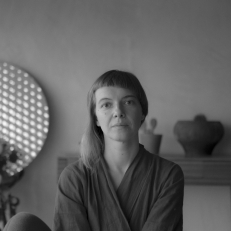
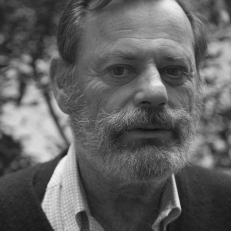

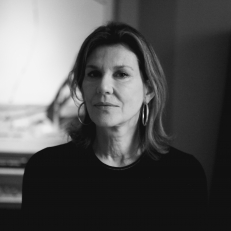
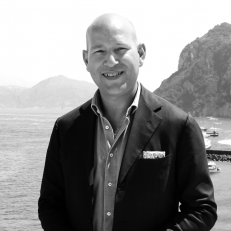


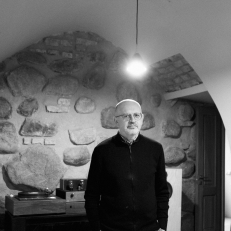

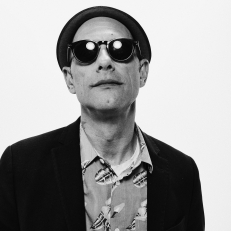


Add a comment